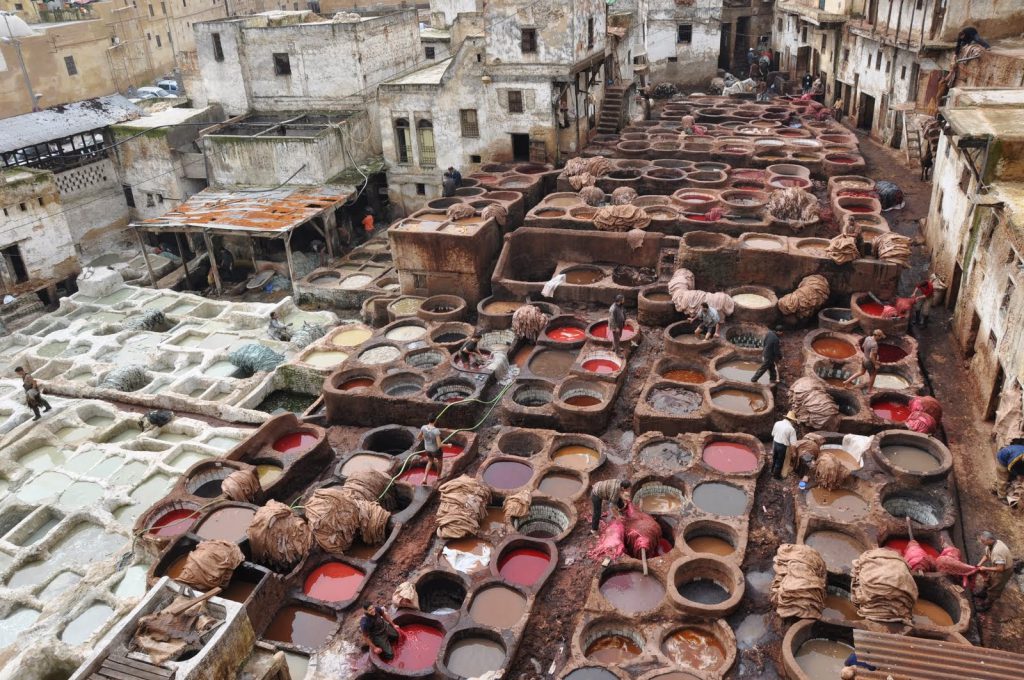The harsh truth about fashion
And the power of conscious buying
The human and environmental cost of what we wear is high, and we – consumers, industry workers, policymakers – are all accountable for it.
By Rute Costa
Picture two identical cotton t-shirts, both made in Bangladesh.
You can buy t-shirt number one for £7. It was made out of genetically modified cotton, wasting vast amounts of water, using chemical pesticides and synthetic fertilisers. It was manufactured in a factory with decaying infrastructure, by a female worker who, despite being subject to long and strenuous hours of work, still doesn’t earn enough money to send her kids to school.
You can buy t-shirt number two for £24. It was made out of clean, organic cotton planted on a fair-trade farm. It was manufactured in a factory that complies with health and safety regulations, by a female worker whose rights are respected, who earns beyond living wage, and has managed to buy bikes for her kids to cycle to school.
“The fast-fashion market has numbed consumers to the consequences of what they buy.”
T-shirt number one will last you 7 wears before it rips or changes colour. T-shirt number two is for life.
Every day, millions of us pick the first option, and perpetuate a chain that is damaging both human lives and the environment. The fast-fashion market has numbed consumers to the consequences of what they buy. We have become complacent, responding to an industry which feels too large for us to change. The solution is actually far simpler than we think. There are two simple steps: we must grow in awareness and action.

AWARENESS
Environment
In the recent Pulse of the Fashion Industry report (May 2017), The Global Fashion Agenda joined forces with The Boston Consulting Group, and made an in-depth analysis of the industry’s environmental and social impact. Based on their findings, it was possible to calculate that fashion is on the top 5 most polluting industries in the world, after transport, housing, and food. In 2015, the clothing industry was responsible for the emission of 1,715 million tons of CO2, about 5.4% of the total 32.1 billion tons of carbon emissions in that year.
More than half of our clothes are made of cotton, and 90% of it is genetically modified. Genetically modified cotton has a huge negative impact on our planet, representing 18% of pesticide use, and 25% of insecticide use worldwide. To be planted and harvested, it is bombarded with large amounts of water and chemicals which are harmful to both the land and human health. Farming communities are the most exposed to these chemicals, but due to a lack of research and testing, the scale of their impact is unquantified and largely unknown. A growing number of cancer cases amongst farmers is raising alarm.
“Every year the world consumes, on average, 80 billion new pieces of clothing.”
Clothes waste is another voluminous concern. Every year the world consumes, on average, 80 billion new pieces of clothing – 400% more than twenty years ago. The figures are abysmal: in the US alone, people generate a total of 11 million tons of textile waste every year. In the UK, a survey conducted by Sainsbury’s found out that ¾ of consumers choose to throw away rather than recycle their clothes. A campaign to encourage garment recycling has reached some high-street shops like Zara and H&M, who committed to having collection bins in their shops for clothes’ recycling. However, if they carry on producing in mass, and encouraging consumers to buy in mass, is this any more than a tokenistic effort?
The production of leather combines the environmental impact of two of the most polluting industries in the world: farming and fashion. Livestock farming requires unsustainable amounts of water, feed, pasture land and fossil fuels. The process of turning animal skin into leather – tanning – requires extensive use of toxic chemicals like chromium, formaldehyde and cyanide. The resulting liquid and solid waste, with leftover chromium and other hazardous compounds, contaminates land and water and affects the health of the surrounding community. The makers are at an even higher risk, particularly in developing countries where workers’ rights are poor. Chromium is highly hazardous to health: studies have found that tannery workers have 20% to 50% more chances of developing cancer. Additionally, unprotected handling of chromium is corrosive to the skin: it can cause painful ulcerations that are difficult to heal.
Makers
On the 24th of April 2013, a disaster hit the garment industry: the Rana Plaza building in Bangladesh, home to five clothing factories producing for big brands, collapsed. 1,138 people died and 2,500 were injured, mainly young women. It was a wake-up call and the start of a Fashion Revolution, demanding more transparency from global brands, and gradually making them accountable for breaches in human rights.
“There are 75 million clothing workers worldwide, approximately 80% of them female.”
More and more consumers were encouraged to ask the question: “who makes my clothes?”. Often the answer was: a worker with little to no rights, earning below living wage, working in a factory with poor infrastructure. There are 75 million clothing workers worldwide, approximately 80% of them female. 97% of our garments are made overseas where most workers live in poverty and are unable to afford life’s basic necessities, many are subject to exploitation, abuse and danger.
The brands that perpetuate this supply chain make billions every year. They consistently profit from cheap labour in developing countries, but there is no reason for this to happen. Established brands can become huge influencers for change: they have the power to campaign for their workers to be treated fairly. Increasing their transparency and building awareness of an ethical and sustainable brand will also increase trust in their buyers.
“The human and environmental cost of what we wear is high, an we – consumers, industry workers, policymakers – are all accountable for it.”

ACTION
The first step to taking action is becoming conscious of how our clothes have impacted both the environment and human lives. This information will make us rethink our choices as consumers, become better buyers, and positively influence the fashion industry. Here are a few suggestions of small gestures that can have a huge impact:
- Pick your brands. Prioritise producer centric brands that have a commitment to fairtrade standards, and share their profits with their makers and suppliers.
- Will you wear it in 10 years? Garment waste is a huge problem, and disposable fashion has become the norm. Ask yourself if you love the item enough to buy it, and slow down your consumer urge. Quality over quantity: buy less, invest only in items that matter to you, that are durable, and that you’re unafraid to wear more than a dozen times.
- Create your own seasons. Brands have created marketing strategies that reveal new trends almost every week. This encourages consumers to buy and dispose of more and more clothes, more rapidly. Stick to your own trends, and don’t get carried away by the tide.
- Dress clean. Pick sustainable over cheap. It is fact that sustainable garments are more expensive, mainly because their brands are paying the makers fairly and taking the necessary precautions to be environmentally friendly. It is also true that most people can’t afford to buy them on a regular basis. However, the more sustainable clothing people buy, the cheaper it will become, and the more it will pressure big retail brands to reconsider their ethical and sustainability policies.
- Talk about fashion. Discuss more than the new trends. Clothes are so present in our lives and yet we pay so little attention to their journey to our wardrobes. Share what you know, and spread the awareness.
